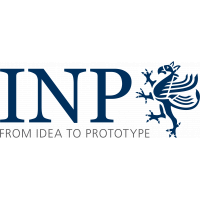Plasma-activated chemical transformations promise the efficient synthesis of salient chemical products. However, the reaction pathways that lead to desirable products are often unknown, and key quantum-state-resolved information regarding the involved molecular species is lacking. Here we use quantum cascade laser dual-comb spectroscopy (QCL-DCS) to probe plasma-activated NH3 generation with rotational and vibrational state resolution, quantifying state-specific number densities via broadband spectral analysis. The measurements reveal unique translational, rotational and vibrational temperatures for NH3 products, indicative of a highly reactive, non-thermal environment. Ultimately, we postulate on the energy transfer mechanisms that explain trends in temperatures and number densities observed for NH3 generated in low-pressure nitrogen-hydrogen (N2–H2) plasmas. This dataset provides the supplementary data to the published article.
| Field | Value |
|---|---|
| Group | |
| Authors | |
| Release Date | 2024-05-22 |
| Identifier | 229a7e48-1c72-4ee0-9223-af045205a5bc |
| Permanent Identifier (DOI) | |
| Permanent Identifier (URI) | |
| Is supplementing | |
| Plasma Source Name | |
| Plasma Source Application | |
| Plasma Source Specification | |
| Plasma Source Properties | The plasma was generated in a plasma nitrocarburizing (PNC) reactor for all the measurements, with DC voltage and a power of 355 ± 50 W. |
| Plasma Source Procedure | The discharge was located on a metal mesh of stainless steel in the top of the reactor. A workload made of stainless steel was also used to increase the discharge power and the stability of the plasma, and it was negatively biased relative to the reactor wall. The outer wall of the reactor is cooled to near room temperature at 295 K ± 1 K by a recirculating flow of water at 293.0 K ± 0.1 K. |
| Plasma Medium Name | |
| Plasma Medium Properties | The measurements were conducted at a pressure of 1 mbar with N2 and H2 gases as the precursors. Different mixtures of N2 and H2 gas precursors were delivered to the reactor at a constant mass flow rate of (500 ± 5) standard cubic centimeters per minute (sccm). |
| Plasma Medium Procedure | The measurements were conducting at room temperature with no external heating. |
| Plasma Target Name | |
| Plasma Target Properties | A workload made of stainless steel was also used to increase the discharge power and the stability of the plasma, and it was negatively biased relative to the reactor wall. |
| Plasma Diagnostics Name | |
| Plasma Diagnostics Properties | The dual-comb source (IRsweep IRis-core) emitted in the spectral range from 1035 cm−1 to 1085 cm−1 with repetition rates of frep ≈7.417 GHz, a difference in repetition rates of Δfrep = 2.1 MHz and average output optical powers ≥100 mW. |
| Plasma Diagnostics Procedure | The QCL outputs were attenuated by approximately tenfold using neutral density filters and aligned to create two dual-comb paths: reference and probe. Polarizers were used in each recombined QCL beam path to match interferogram intensities, and the dual-comb beams were focused onto photodetectors using off-axis parabolic mirrors with focal lengths of 25.4 mm. |
| Language | English |
| License | |
| Public Access Level | Public |
| Contact Name | Ibrahim Sadiek |
| Contact Email |
Data and Resources
- Dual-comb spectroscopy of ammonia formation in non-thermal plasmas - supplementary data 1zip
This archive contains a bundle of 27 .csv files, corresponding to 27...
Download - Dual-comb spectroscopy of ammonia formation in non-thermal plasmas - supplementary data 2zip
This archive contains 4 lists of transition frequency adjustments applied to...
Download

![[Open Data]](https://assets.okfn.org/images/ok_buttons/od_80x15_blue.png)